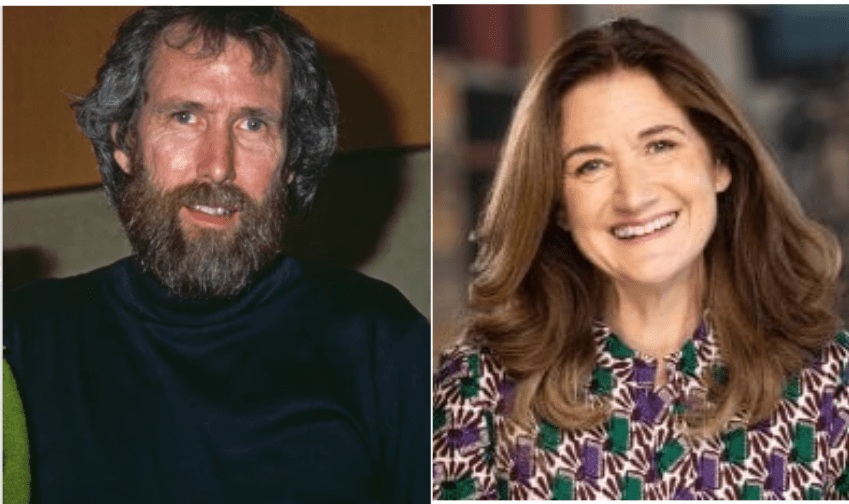By quietly and precisely carrying on her father’s legacy, Cheryl Henson has become a cultural steward whose contributions have profoundly changed the course of American puppetry. Cheryl entered a particularly challenging role following Jim Henson’s untimely death in 1990—not as a performer or producer, but as the defender of artistic integrity. She became president of The Jim Henson Foundation in 1992, and since then, the organization has funded more than 1,000 projects that might not have otherwise been seen.

Despite not always taking center stage, her role has been incredibly successful in upholding the values her father espoused. Cheryl has prioritized infrastructure development, grant distribution, and creating an environment where puppeteers are not only respected but also given the freedom to push boundaries rather than seeking attention. Her influence has grown more apparent in recent years as younger generations rediscover the emotional resonance of puppetry in a world of digital noise.
Cheryl Henson – Personal and Professional Profile
| Category | Details |
|---|---|
| Full Name | Cheryl Henson |
| Date of Birth | August 7, 1961 |
| Age | 62 |
| Parents | Jim Henson, Jane Henson |
| Siblings | Lisa, Brian, John († 2014), Heather |
| Current Role | President, The Jim Henson Foundation |
| Tenure Start | 1992 |
| Known For | Advancing American puppetry and cultural arts |
| Education | Yale University |
| Major Focus | Grant-making, Puppetry advocacy, Artistic curation |
| Reference | www.hensonfoundation.org |
Additionally, Cheryl’s siblings have contributed to carrying on their father’s creative momentum. The commercial side was taken on by Brian Henson, who revived Fraggle Rock and produced films like The Muppet Christmas Carol. Lisa handled her production responsibilities in a more subdued manner. Heather combined activism and art. However, Cheryl has made a particularly creative contribution by establishing a niche for nonprofit puppetry support during a period when conventional funding models have significantly decreased.
Cheryl has garnered attention over the last ten years by forming strategic alliances with cultural organizations rather than by promoting herself. She instituted emergency grants to help puppetry artists deal with financial loss and social isolation during the pandemic, when performance venues were facing existential issues. Her strategy, which prioritized long-term sustainability over temporary headlines, was extremely effective rather than reactive.
Jim Henson, who has a strong fascination with mysticism and creative unity, once called Jane Roberts’ Seth Material “very beautiful” and “harmonious.” Cheryl’s strategy reflects that opinion. She has maintained the flame of authenticity by prioritizing storytelling over spectacle and encouraging collaboration over competition. She has brought the art form to new audiences without sacrificing its essential qualities by forming strategic alliances with theaters, art schools, and puppetry festivals.
In the documentary Jim Henson: Idea Man, which was directed by Ron Howard, Cheryl is instrumental in forming the story of her parents’ relationship. She discusses Jim and Jane’s emotional conflict and creative synergy openly but with measured reverence. The couple, who were married in 1959, created Muppets, Inc. from the ground up. However, the strain of raising five children and creating a worldwide brand caused the relationship to end in legal separation by 1986. Jane continued to be Jim’s closest confidante even after they parted ways, even paying him a visit the night before he passed away.
Remarkably composed, Cheryl also remembers going with her father on his last visit to North Carolina, a few days before he started coughing up blood and having trouble breathing. His failure to promptly seek medical attention proved to be fatal. It was already too late when he was brought to NewYork-Presbyterian Hospital. Streptococcal toxic shock syndrome sounded like a rare diagnosis, but it killed fast. Many thought that his death at the age of 53 was a reflection of a larger misconception about bacterial infections that progress quickly. His doctor quickly dispelled the false AIDS rumors that were spread by misinformation at the time.
Cheryl’s life and the lives of other legacy caretakers, such as Walter Cronkite’s granddaughter Avery or Nora Ephron’s son Jacob Bernstein, are remarkably similar in that they are dedicated to reinterpreting legacy through a modern perspective. Cheryl has significantly enhanced the past rather than merely conserving it by bringing it up to date, increasing inclusivity, and elevating voices that are frequently left out of conventional narratives.
She has supported productions by neurodiverse artists, queer actors, and immigrant artists by utilizing the reach of her nonprofit, guaranteeing that puppetry, a long-regarded niche art form, transforms into a dynamic forum for intersectional expression. Younger artists hoping to stay away from corporate routes while still gaining significant recognition have benefited greatly from these choices.
Cheryl’s work highlights a slower, more deliberate artistry in a time when fast content is king. She cultivates artists who breathe into foam and sculpt subtleties into fabric. Her grants frequently serve as both financial support and validation for up-and-coming puppetry artists. During a recent festival panel, one recipient said, “The Henson Foundation believed in us when no one else would.” These endorsements demonstrate the foundation’s ongoing dedication to experimentation, risk-taking, and artistic integrity.
Cheryl has created something remarkably resilient by incorporating her parents’ principles into her leadership. Her stewardship seems more like a reimagining than a succession. She is the silent creator of a creative ecosystem that depends on empathy, creativity, and continuity; she is more than just Jim Henson’s daughter.
